The Curious Case of Ink Pricing

We are a strange people. When it comes to posturing, we are jingoistic to the point of being obnoxious. We wear our nationalism on our sleeves like oversized logos, while in the heart of our hearts we couldn’t care less, for what drives our purchase decision is really the price consideration. The strange, nay, inexplicable logic that drives us, make us expect that Indian products will be comparable to the best in the world, yet, be priced at bargain basement levels! Anything above such throw-away pricing and we will bend over backwards to find faults, often imaginary, to belittle our own enterprises: to hell with patriotism, chauvinism and xenophobia. Considerations about input costs and other such mundane matters be damned!
Take the curious case of fountain pen inks, which are nothing more than simple dyes added to water mixed with some binder and solvents. No rocket science there. Yet, if one were to go through the reams of writing that exists, ostensibly from “experts” analysing the merits and demerits of inks, is mind-boggling. If you read between the lines you can’t but help notice just how frivolous and lopsided the views are, in favour of the “phoreign” stuff – branded trinkets bought at steep prices. Reasonably priced Indian products are pooh-poohed as ones not deserving the consideration of the self-appointed defenders of the ink-galaxy, while priced “steep”, they are dismissed as unholy attempts to fleece the serious hobbyists.
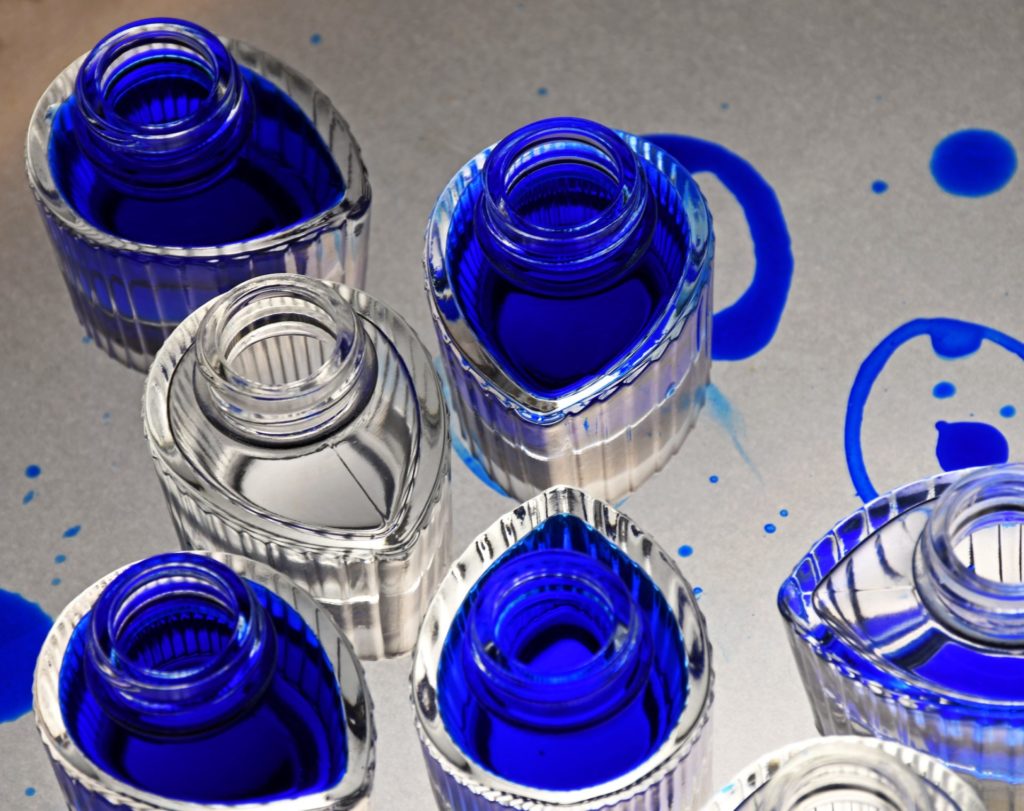
That brings us to the key questions: what are the key components of a bottle of ink’s cost? How are prices arrived at? The answers too, are not far to seek.
The biggest cost component in a bottle of ink is not the ink itself, but the bottle. The problem here is that ink demand is not big enough to justify sourcing glass bottles from automated glass factories who insist on selling bottles in quantities that are simply not economical for the ink makers. Manually blown glass bottles are less uniform, heavier in weight (adding to the courier cost) and are naturally more expensive. The other alternative is to source from China, which to companies like Sulekha for example, is a strictly no-no; or to sell the inks in plastic bottles, which will defeat the very purpose of using inks as a sustainable writing option. Result? Expensive ink.
Now, the dyes. The cheapest of course, is to use chemical dyes, which come in bright hues to boot. But will they harm the nib and feed? No guarantees that they won’t. The alternative is to go for natural dyes, which add to the cost. Use a three-stage filtration process like Sulekha does, and the ink making process gets inordinately delayed, adding to the cost. You want sheen in your inks? Perhaps, an undertone? But are you willing to accept the residues that such inks leave? Are you willing to risk getting your nib-feed clogged, apart from paying more for such fancy inks? No? Then simple logic would dictate that you desist from the urge to go for the shiny stuff.
Add the cost of printing and packaging. Then add transportation cost (to the dealers and or, the courier charges in case the website is footing the bill). To this is added the overhead costs of the manufacturers, which is often substantial. Please note, in case you are buying the inks from a dealer, the manufacturer has to part with sometimes as high as 40 – 50 % margin for the dealer, which is criminal, claims the manufacturers. And finally there is the tax. GST and what not. Let us not rub it in by putting the actual figures so that the real profit, rater an excuse of a pittance, made by the manufacturer per bottle of ink sold is brought out in the open.

Now take a quick dekho at the prices of some of the easily available inks in India. I have also mentioned the name of the website from which the prices have been sourced for ease of use. The imported inks are all duty paid. And the inks have all been converted to 100 ml for the sake of convenience in comparing – apples to apples, other things remaining the same.
| Name of the ink | Website name | Price per 100 ml (Rs) |
| Krishna Ink Urban Series | ThePenWorld | 3000 |
| Lamy T52 | WilliamPenn | 1600 |
| Kaweco 10000679 | WilliamPenn | 3117 |
| Pelikan Edelstein | SwastikPens | 4600 |
| Ottohutt | SwastikPens | 6333 |
| Cleoskribent | SwastikPens | 2367 |
| Krishna Ink Indian Series | ThePenWorld | 2150 |
| Montblanc 105188 | WilliamPenn | 3558 |
| Sailor Storia | WilliamPenn | 4900 |
| Lapis Bard Ink Vial Kit Set | WilliamPenn | 3990 |
| Aurora 100th anniversary | Makoba | 4000 |
| Montegrappa | Makoba | 4300 |
| Diamine | Makoba | 3380 / 2580 |
| Aurora Standard | Makoba | 3300 |
| PILOT IROSHIZUKU | Makoba | 2800 |
| Kaweco Standard | Makoba | 2340 |
| KWZ Ink | Makoba | 1833 |
| Taccia | Makoba | 2488 |
| Waterman | Makoba | 1000 |
| Cross | Makoba | 1864 |
| Diplomat | Makoba | 2083 |
| Sulekha Swadeshi | Sulekha Website | 831 |
| Sulekha Swadhin Series | Sulekha Website | 167 |
| Sulekha Samarpan Series | Sulekha Website | 334 |
| Sulekha Firingi Kali | Sulekha Website | 1667 |
Now take the Firingi Kali from Sulekha for example – the wooden box costing Rs 5000 has six bottles of different coloured inks of 50 ml each. The cost of the box, the note book, postage and the other trinkets that are thrown in are not considered and yet, the cost works out cheaper than most of the inks considered here. Still there are the so-called experts who will claim that the ink is expensive? Now you know what I am trying to say? It is not easy being an Indian manufacturer, especially if you are selling in India.
But of course, if you consider the Sulekha Sadhin, which is made available to students at an invitation price as was promised by the then owner of Sulekha to Mahatma Gandhi, the figure works out to Rs 167 (for the same 100 ml) and is strictly not comparable!
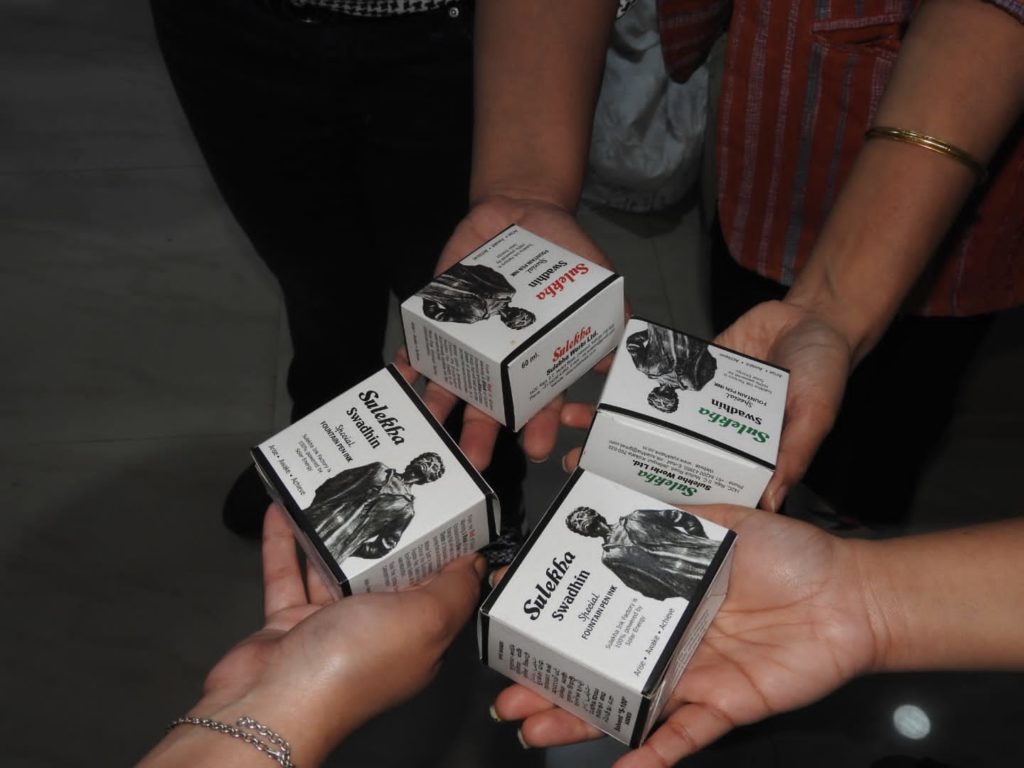
Now for the quality of the inks. One must accept that in the absence of any globally acceptable parameters of comparison, such an exercise is going to be totally subjective and my choice can certainly be different from that of yours. The brand names that are involved, the weight of legacies that these brands carry and the expertise that goes into the making of these inks too are different and one cannot really compare one with the other. Yes, the shades are different – and your choice of red may vary from the red that I prefer, but does that make one red inferior or superior to the other? No way! Is it even fair that we eulogise one while rubbishing the other just to buttress our imagined quirks?
So what am I driving at? Simple – go ahead have your pick, write, sketch, scribble, doodle to your heart’s content. But just because you like one ink, does not mean that you can go ahead and rubbish the others. For heaven’s sake, don’t do it especially if they are Indian products. Give them a level playing field to fight it out with the best in the world – with your support, fight they can and, God willing, win they will!
- Jyotshna Agiwal

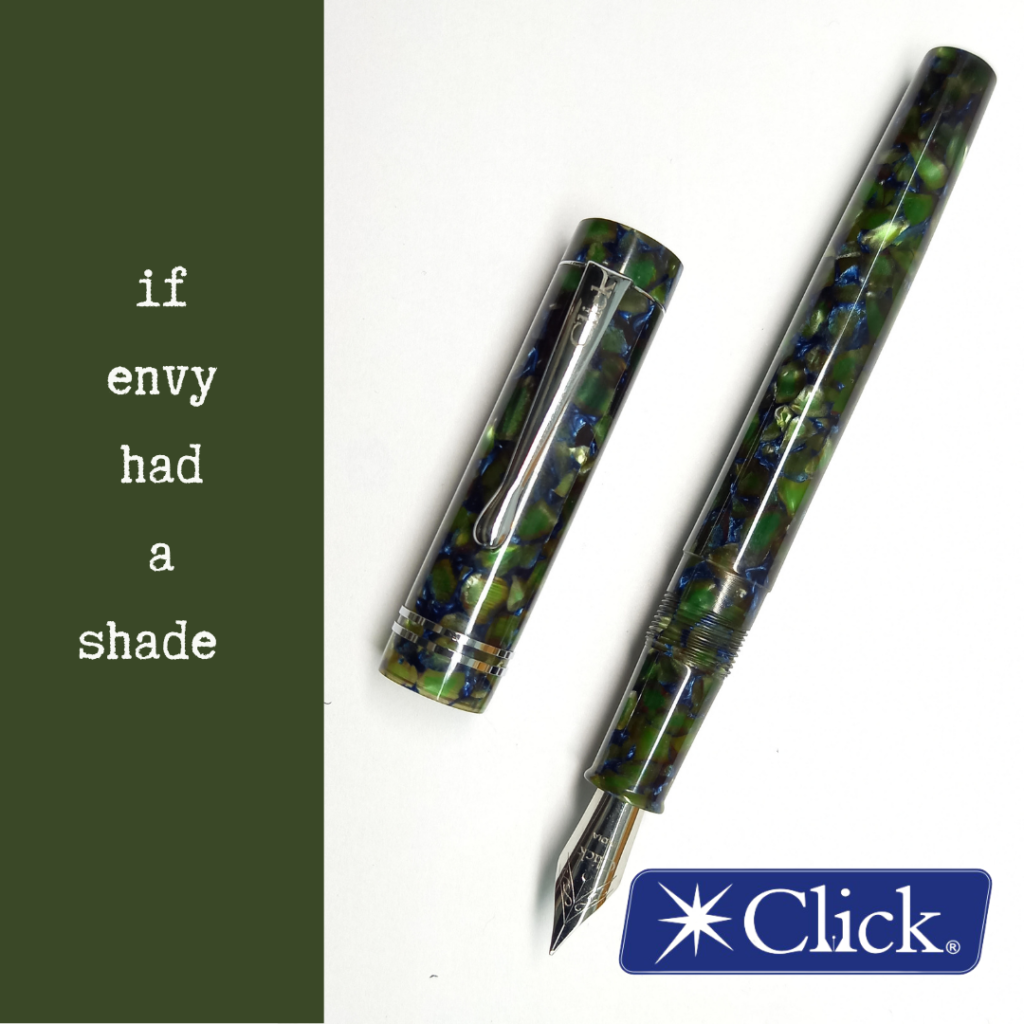
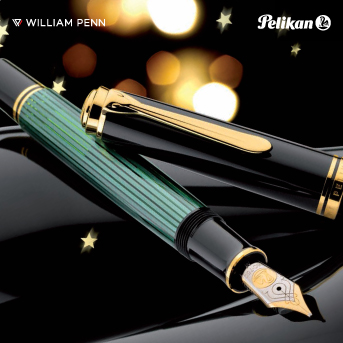
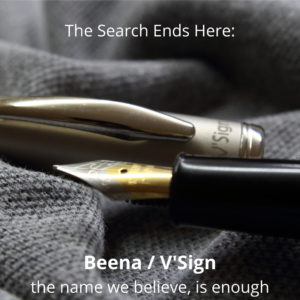

9 Responses
I love samarpan green… Others may be good but my go to green is samarpan.
I bought the Sulekha Blue and Blue Black from their series. Horrible saturation, smells like urine.
No thanks I will continue to use Waterman Florida Blue. Thank you for trying to sell some bad quality ink in the name of domestic production, but no thanks, already money wasted with Sulekha.
Hi bro, how do you think Bril and Daytone inks are?
Sulekha now is just a marketing gimmick only ,running campaigns to make people buy their ink, hugely overpriced, over hyped inks very low in saturation ,fades almost within half an hour. swadhin, swadeshi – horrible blue inks . Swadhin blue can’t even be compared even to camlin royal blue so poor is the saturation. Swadhesi is little better but Parker’s quink blue is way better than it. Most horrible was the Samarpan Ma . Really disappointed.
Yessss! 100% right, scathing, brutal truth! The same goes with fountain pens. While i love my lamy and Sheaffer, I’m willing to pick a fight with anyone who says Indian made pens are crap- like the Gama. It’s one of the best fountain pens I’ve ever used and I take immense pride in the fact that it’s homegrown!
Very good job for founton pen lovers
Most of the Sulekha inks are light to very light. I generally have to mix in order to get some degree of depth. Also the prices you noted in the table are inflated ones. Please check Amazon for realistic prices. Leaving a few , Waterman, pilot , jinhao and Krishna all come under 500Rs for most of their range.
To date most of our inks to be honest have low saturation and are watery and fade away early and don’t have lubrication . The only ink on par with other quality inks from our side in terms of all the above factors is Krishna inks.Nobody has rubbished Krishna inks since it has good standards.I don’t mean that our inks are trash but there is certainly a difference in quality.Even some Chinese inks like Jinhao and Hero inks have bad quality. So instead of trying to suppress the facts in the name of nationalism and patriotism the real patriotic thing would be to accept facts and improve the quality …and stop silencing the voices that are raised in that regard.
Lol… Sulekha is garbage. You know what keep your nationalism in your pant only don’t thrust it downside my throat